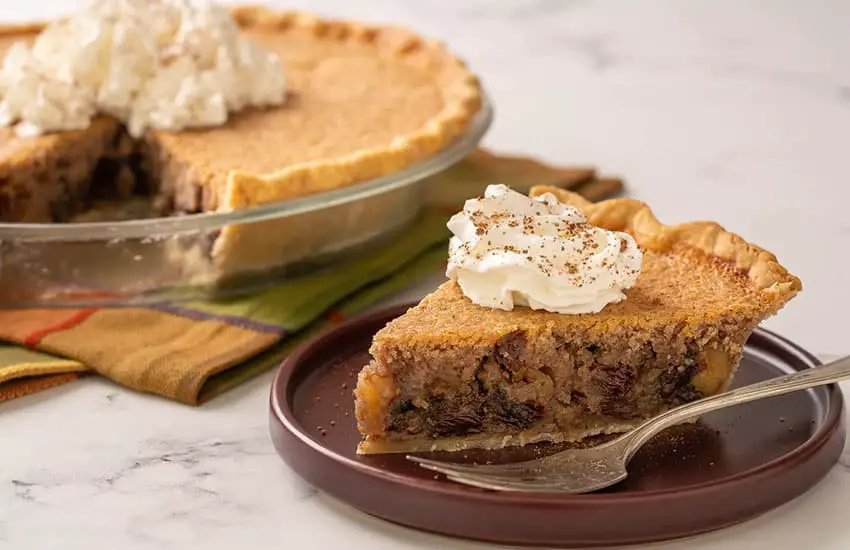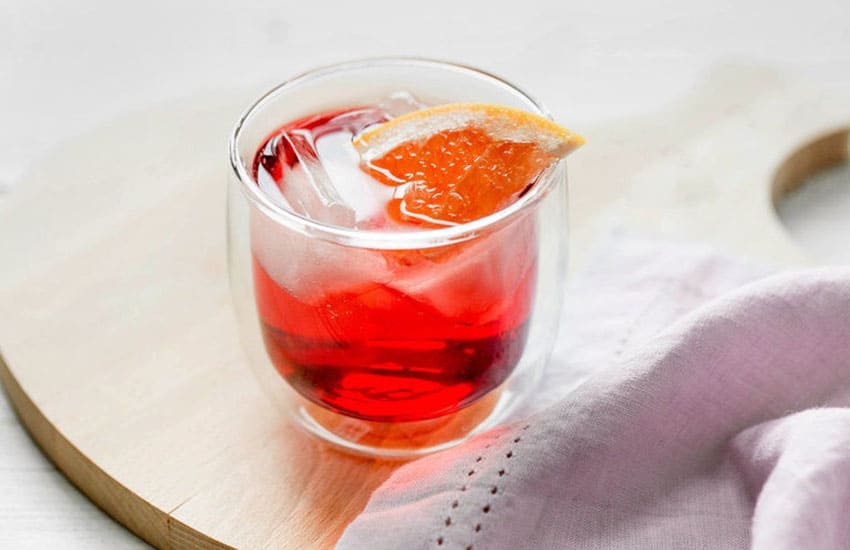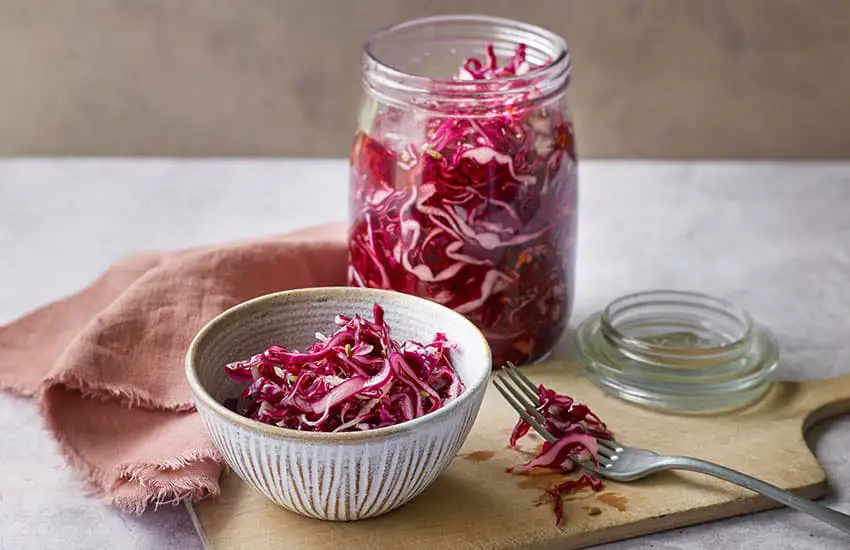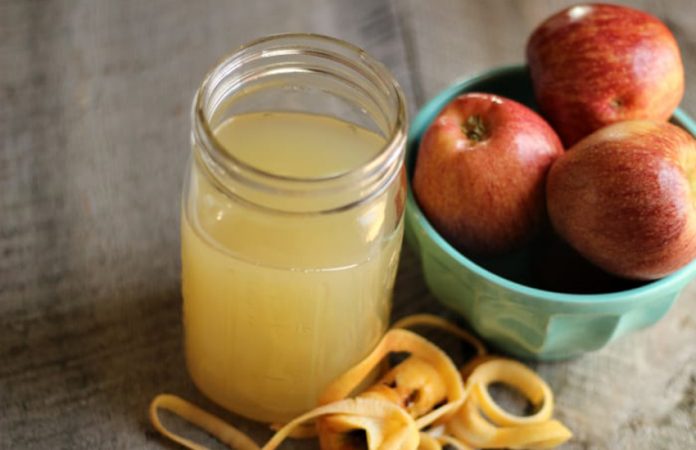Seems like apple cider vinegar (ACV) — the unfiltered, organic Bragg brand — can now be found all over Mexico. Here in Mazatlán, it’s on the shelves of big-box stores and small natural food shops and also available through Amazon México.
Is everyone interested in probiotics, which ACV is naturally full of? Perhaps. But more likely this newfound popularity is due to its reputation as a weight-loss aid.
For what it’s worth, the Mayo Clinic says there’s not much evidence supporting that claim, although it has been proven beneficial for a healthy gut and digestive system. At the same time, lots of alternative health practitioners and sites say otherwise.
Anecdotally, I know people who swear by the effectiveness of taking a tablespoon of ACV in water once or twice a day for curbing appetite, burning fat and general digestive health. You’ll have to decide for yourself. Any way you look at it though, it’s is a wonderful thing to have in both the sweet and savory kitchen.
It adds flavor and depth to all sorts of foods: marinades, glazes, salad dressings, potato, pasta and three-bean salads, roasted veggies, smoothies and certain desserts — most notably Vinegar Pie, an old recipe that became famous during the Great Depression.
ACV is tart, tangy and sweet at the same time, a perfected creation that does justice to its humble origins of apple cider meeting the miracle of fermentation.

Apple cider vinegar is exactly what it says it is: fermented apple cider (“cider” meaning fresh-squeezed, unpasteurized apple juice). Naturally occurring yeasts digest the sugars in the apple juice and turn it into alcohol; then other bacteria break the alcohol down into acetic acid, the main component of vinegar.
It’s those bacteria that contain nutrients, enzymes and the all-important probiotics, and that’s also what forms the “mother,” a gelatinous stringy blob floating in the liquid that can be used to start subsequent batches. (Commercial ACV will have the mother removed, although particles will remain.)
A word about the difference between apple cider vinegar and kombucha: both are fermented and contain gut-friendly probiotics, but there the similarities end.
ACV is much more acidic, while kombucha also contains proteins, can be made in a variety of flavors with different teas or fruit juices as starters and is used as a beverage, not a vinegar.
With a bit of patience, you can easily make your own apple cider vinegar. If you don’t have access to fresh, unpasteurized apple cider, you’ll be making what’s called “Apple Scraps Vinegar” — almost but not quite the same. (Recipe below.)
“Apple Scraps” Vinegar
- 2 cups chopped apples, with peels and cores
- 2 Tbsp. sugar
- 3 cups filtered water
Place apple pieces in clean, sterilized 1-quart glass jar. (A Mason jar works great.) Mix sugar with water until dissolved, then pour into jar with apple scraps.
Cover jar with swatch of cotton cloth or coffee filter. Secure with a rubber band.
Let sit in a cool, dark place (like inside a kitchen cupboard or closet) for 2–3 weeks, stirring occasionally and making sure apple pieces are fully submerged. (Important: If the apples are exposed to air, they can grow mold, and your batch will be bad.)
After 2–3 weeks, strain out the apple pieces. Pour vinegar liquid back into jar and leave for another 3 weeks; the longer it sits at this point the more acidic it will get. If a vinegar “mother” forms, save it. (See above.)
When done, the vinegar should taste bright and “vinegary” but not sour or musty.

Hibiscus Fizz
- ¼ cup strong hibiscus tea, chilled
- 1 Tbsp. agave nectar or honey
- 1 Tbsp. ACV
- Soda water, to taste
- Slice of grapefruit or lemon for garnish
Combine hibiscus tea, agave/honey and vinegar in a large rocks glass. Fill with ice and top with soda water. Garnish with a citrus slice.
Barbacoa-Style Shredded Beef
- 1 (3 lb.) beef chuck roast, cut in 6-8 chunks
- Salt and pepper
- 2 Tbsp. vegetable oil
- ½ cup beef broth
- ¼ cup ACV
- ¼ cup fresh lime juice
- 4 chipotle peppers in adobo sauce, chopped
- 5 cloves garlic, chopped
- 1 Tbsp. ground cumin
- 1 Tbsp. dried oregano
- ¼ tsp. ground cloves
- 3 large bay leaves
Season beef chunks thoroughly with salt and pepper. Heat oil in large skillet over medium-high heat. Working in batches, cook beef until browned. Transfer to a slow cooker.
Mix broth, vinegar, lime juice, chipotle, garlic, cumin, oregano and cloves together. Season with salt and pepper; pour over beef in slow cooker. Stir in bay leaves. Cook on low setting until beef is fork-tender, 8–10 hours. Discard bay leaves.
Remove beef from cooker and shred using two forks. Return meat to slow cooker, stir to coat with sauce. Let marinate at least 10 minutes before serving inside tacos or as an entrée.
Apple-Glazed Sweet Potatoes
- 6 medium sweet potatoes, peeled
- ½ cup apple cider/unfiltered apple juice
- 2 Tbsp. olive oil
- 1 Tbsp. ACV
- 1 Tbsp. grated dark piloncillo/dark brown sugar
- Salt
Cut sweet potatoes into 2-inch chunks. Whisk together cider, oil, vinegar and sugar; toss with potatoes.
Place potatoes and liquid in a large shallow roasting pan. Roast in a 375 F (190 C) oven, stirring occasionally, until potatoes are browned on edges and soft inside, 45–60 minutes. Season to taste with salt.

BBQ Sauce
- 2/3 cup ketchup
- ½ cup ACV
- ¼ cup brown sugar/grated piloncillo
- ½ tsp. ground cumin
- 1 tsp. salt
- 1 tsp black pepper
- Optional: 1-2 tsp. smoked paprika
Combine all ingredients in small saucepan. Simmer over medium heat 5–7 minutes. Refrigerate.
Pickled Cabbage
- 4 cups shredded purple or green cabbage (about ½ medium head)
- 1¼ cups water
- 1¼ cups ACV
- 1½ tsp. salt
- 2 tsp. sugar
- 2 cloves garlic, sliced
- 2 teaspoons coriander seeds
- 12 black peppercorns
- Optional: Pinch red pepper flakes, diced jalapenos or bell peppers, 1-2 tsp. caraway or mustard seeds. Substitute 1 cup shredded carrots for equal amount of cabbage if desired.
Slice cabbage into thin shreds; set aside in a large bowl. Bring water to a boil over high heat; remove from heat, add vinegar, salt and sugar and optional ingredients if using. Pour the hot brine over the cabbage.
Divide brined cabbage between two (1-pint) jars, layering evenly with garlic slices, coriander seeds and peppercorns. Place lids on jars; refrigerate at least 2 hours before serving. For best flavor, refrigerate 24–48 hours. Store in fridge for up to seven days.
Janet Blaser is the author of the best-selling book, Why We Left: An Anthology of American Women Expats, featured on CNBC and MarketWatch. She has lived in Mexico since 2006. You can find her on Facebook.
